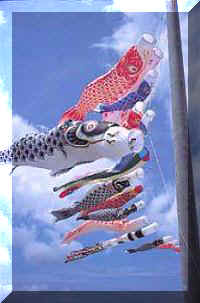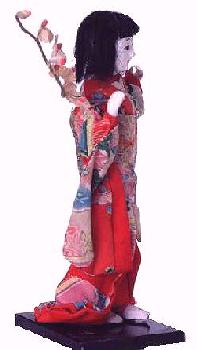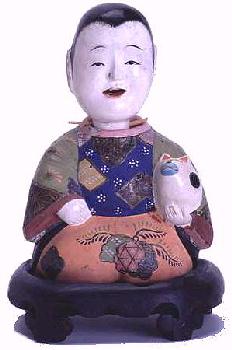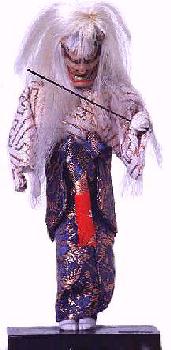


BOYS' DAY



A familiar sight to Yokosuka and Yokohama people these days are the Koinobori or carp banners in honor of Boys' Festival (Shobu-no-sekku) on May 5. Paper and cloth streamers in the shape of carp, which fill out in the wind and appear to swim in the air, are hoisted on a tall bamboo or wooden pole erected to a roof. A carp of appropriate size and originally hoisted for each son, from largest to smallest. Legend claims that the carp is used to represent Boys Festival for its energy and power used to fight its way up swift-running streams, cascades, and falls. Because of its strength and its determination to overcome all obstacles it is held to be a fitting example for all growing boys, typifying ambition, energy, strength, perseverance, and the will to overcome all obstacles. This is the fundamental idea of the festival -- the encouragement of manliness, the overcoming of life's difficulties, and consequent success.
Note: In recent years, 'Boys' Day' although still celebrated has a new name, and is included in other festivities. Originally called Shobu-no-sekku, it is now referred to as Tango-no-Sekku, and has been included within a larger festival for the day -- May 5 -- called Children's Day or Kodomo-no-hi -- a day to celebrate children in general and to stress the importance of respecting the character of children and promoting their health and happiness. In addition to flying the koinobori (carp streamers) on this day, families with boys set out gogatsu-ningyō (dolls for the Boy's Festival), patterned after warriors and heroes. It is also the day for children to express their gratitude for the tender love and care they receive from their parents.
On a similar note there is a 'Girls' Festival', or The "Hinamatsuri," -- which literally means "miniature doll festival," and celebrated 3 March; with a tradition dating back hundreds of years. Dolls are displayed on a tiered stand set up for the occasion. Generally, the top of the tier is reserved for dolls representing the Emperor and Empress. Beautifully arranged peach flowers also add to the festive spirit. In the old days, simple hand-made straw dolls were thrown into the river along with offerings. Today gorgeous dolls dressed up in the "Heian" era kimono costume, and passed from generation to generation are decorated on this occasion. A male doll and a female doll are placed close to each other representing the wish for love. "Kokeshi," (carved wooden dolls) and other dolls are also set together in the display.
 |
 |
 |
HISTORICAL YOKOHAMA: Yokohama was organized as a municipality in 1889, when it's population had grown to 121,000. Two years previously waterworks had been opened and in 1896 the harbor was greatly improved. Gradually the boundaries of the city were extended, with a corresponding increase in the population.
Yokohama experienced the most terrible disaster that has ever befallen any city when, on September 1, 1923, and earthquake destroyed most of the buildings and the ensuing fire practically wiped the city out of existence.
This severe blow was not with great fortitude, for although a large number of refugees had to seek shelter elsewhere, two years after the catastrophe a population of 405,000 was recorded. The census of October, 1938, gave the population as 854,000, not including 4,380 foreigners.
The new Yokohama which rose from the ashes of the former city was greatly improved in every respect. The roads were widened, the foreshore was reclaimed using debris caused by the earthquake, and many substantial buildings were erected including the Prefecture Office, one of the finest buildings in the city.
Data from 30 April 1960 'Seahawk' provided by Sandy Frediani, C/O 1969